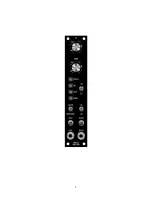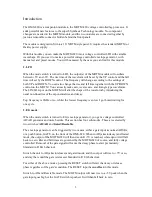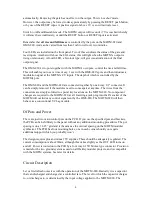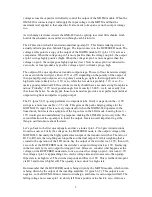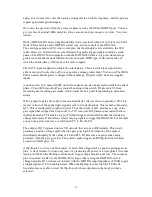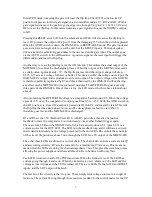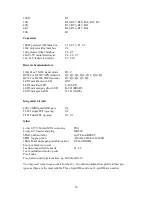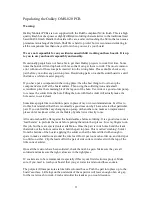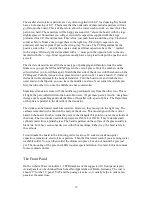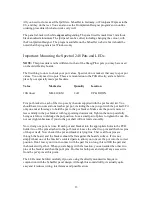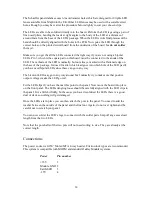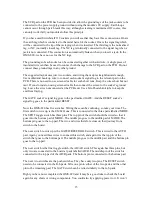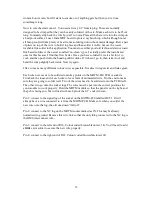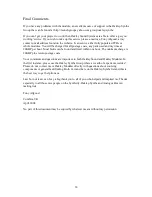
In GATED mode, removing the gate will reset the flip-flop. The AUTO switch in its UP
position will pass an inverted gate signal to a second differentiator, C5, R22 and D4. When a
gate signal is removed, the positive going edge runs through U4 (pins 1,2,3 & 11,12,13) and
D4 to reset the flip-flop. In this mode removing a gate signal will cause the MOTM’s output
to fall.
Pressing the RESET switch (R-S on the schematic and PCB) will also cause the flip-flop to
reset. D7 protects the output of U4 pin 11 from the damaging 15V when the switch is pressed.
When the AUTO switch is down, the OMS-820 is in RESETABLE mode. The gate input and
gate switch are no longer able to reset the unit, but the RESET input is. This input socket
drives a transistor schmitt trigger similar to the one used on the gate input. The output goes,
via the AUTO switch, to the differentiator. A positive signal at the reset input will trigger the
differentiator and reset the flip-flop.
Another way to reset the flip-flop is via the AD function. This utilises the actual output of the
MOTM-820 to control the discharging process. When the output of the MOTM unit exceeds
a certain value, approxi5V, the flip-flop is reset and the output voltage will drop.
U3 (5,6,7) acts as a voltage follower or buffer. This device ‘sniffs’ the voltage on its input, the
MOTM-820’s output, and reproduces it at its own output. The output voltage of the MOTM
is therefore perfectly replicated by U3 and this is then used by the OMS-820 without having
any effect on the MOTM-820 or its connected modules. The BUFFERED signal is used by
three parts of the OMS-820. One of these is for the LFO mode, which we have talked about
already.
Also monitoring the BUFFERED voltage is a comparator based around U2. When the voltage
e5V or so, the comparator’s output goes from 0V to +15V. With the AD/R switch in
the AD position, ie. closed, the output is passed via D3 into U4 and resets the latch. This tells
the flip-flop that the attack phase is over and the decay phase is about to start. Pin 10
therefore goes low and the MOTM-820 is discharged.
R1 and R2 set the +5V threshold level. R10, with R3, provides a thin slice of positive
feedback to force the comparator to switch cleanly... its another Schmitt trigger again.
There are four LEDs on the OMS-820 all of which are actively driven. U3 (pins 1,2,3) is a
current source for the OUT LED. The LED is in the feedback loop and it will have a current
that is determined solely by the voltage presented to the end of R6. R6 controls the sensitivity
of the circuit. 1K produces about 5 mA through the LED for a 5V output of the MOTM-820.
The other three LEDs are driven in a current chain. The chain is driven from a current sink Q1
and associating circuitry. R7 sets the current to be a maximum of 7mA or so. This means no
matter what the LEDs are doing the chain always draws 7mA. This prevents switching noises
affecting the power supplies and allows all three LEDs to be driven with only 7mA.
Each LED is turned on and off by PNP transistors. When the transistor is off, the LED has
current going through it and is on. When the transistor is on, it ‘shorts out’ the LED and the
voltage across it drops and the LED is turned off. There are LEDs for the GATE and RESET
inputs, and the SET output of the latch.
The last bit of the circuitry is the two pots. These simply form voltage sources to a couple of
resistors. The current flowing through these resistors is added to the control nodes for the UP
7
Содержание MOTM-820
Страница 2: ...2...


